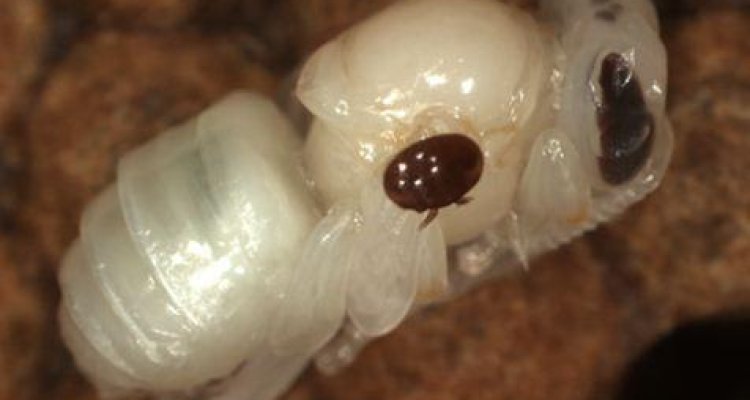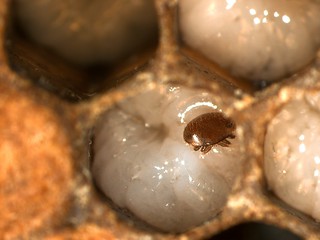
Varroa destructor
Varroa mite disease (varroatosis) is caused by the ectoparasite Varroa destructor. This exotic parasite is a major threat for the European honeybee. There is consensus about the multifactorial cause of bee mortality, but the presence of this mite in all bee colonies leads to enormous pressure on the health of the colonies.
In many cases, winter mortality of honeybees can be attributed to Varroa mite in combination with secondary viral infections that are transmitted by the mite. Bijen@wur studies the consequences of this parasite for honeybees. An important component of this research is the development of optimised practical methods for beekeepers to control this mite.
For more detailed information about Varroa destructor and controlling Varroa mite, please refer to the Brochure on effective control of Varroa mite (in Dutch).
Photo album: for recognition and diagnosis
(Click on the picture to go to the photo album)
Varroa research as part of the National Honeybee Programme
The National Honeybee Programme has been established to provide tools for sustainable control of Varroa mite and to promote their use by Dutch beekeepers.
This programme includes the following components:
- Publishing the Brochure on effective control of varroa mite
- The symposium on bee health
- Providing the diagnosis service for bee parasites and diseases
- Varroa-related research
Applied and fundamental research on Varroa
Bijen@wur performs both applied research and a combination of applied and fundamental research into Varroa mite. The applied research focuses on aspects such as the integration of swarm prevention methods and Varroa mite control. For example, see the articles on:
The more fundamental research concerns the effects of Varroa mite on the vitality of honeybees and bee colonies. For example, see the scientific article on:
Research is also conducted into the degree with which the Varroa mite interacts with other bee mortality-related factors such as nutrition or pathogens. For example, we are currently working on:
- Interactive effects of pollen supply and Varroa destructor on the growth of young honeybees (laboratory study)
- Interactive effects of pollen supply and Varroa destructor on the development of honeybee colonies and the lifespan of winter bees (field study)
- Interactive effects of Varroa destructor, Nosema ceranae, and sublethal exposure to Imidacloprid on honeybee colonies (field study)
In addition, we conduct research into the underlying resistance mechanisms of Varroa mite resistant breeding lines of Bijen@wur, in which the initial breeding stock consists partly of descendants of Gotland bees.
